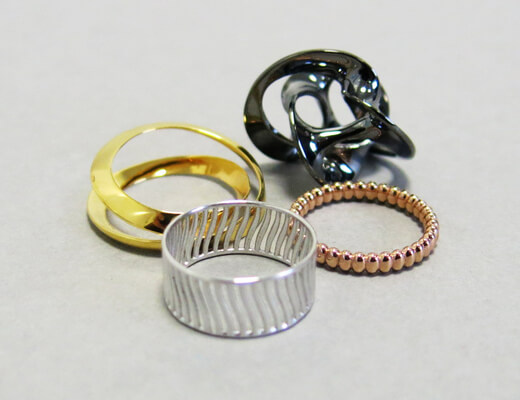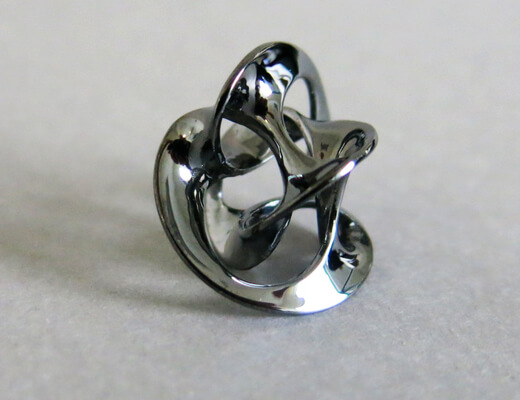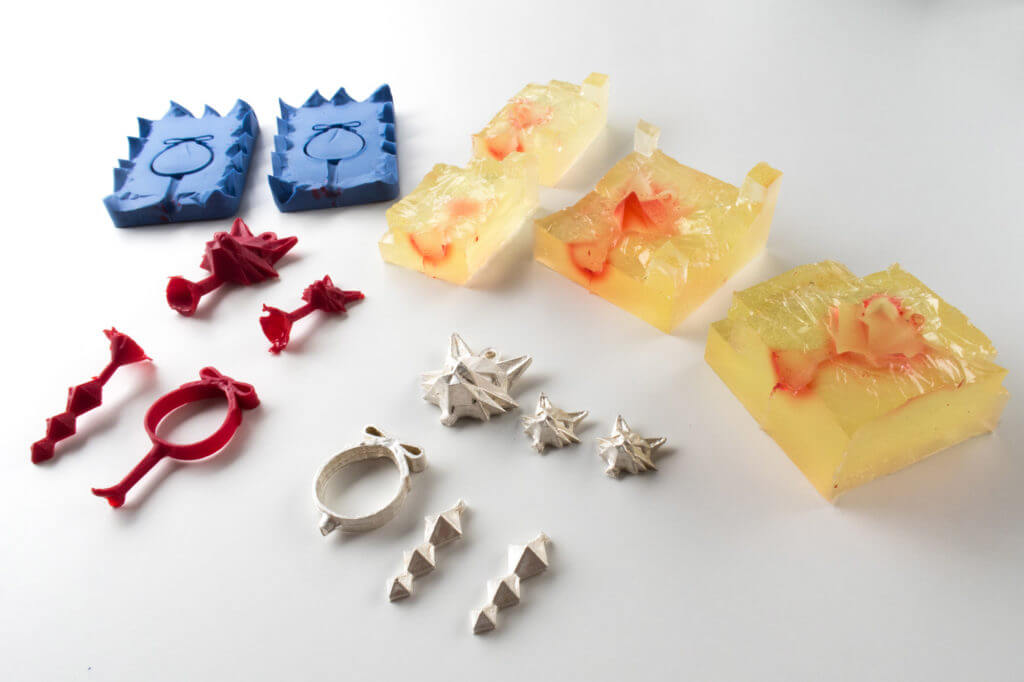As you can see it is possible to create 3D printed molds for projects as big as a hammer. But Additive Manufacturing can also be used for more delicate designs such as jewelry. 3D printing allows us to create an amazing architecture of the objects, impossible to achieve with traditional production methods.
Paula Szarejko is a designer who uses different 3D technologies for her unique jewelry collections. For one of them, her signature silver ornaments inspired by animals, she used wax 3D printing to create 3D printed molds. The technique is the same one as we use at Sculpteo to produce your Metal Casting parts. A wax model is first 3D printed, then a mold is created around it. When hot metal is poured into the mold, it pushes the wax out creating your final product.
http://blog.zmorph3d.com/silver-jewelry-3d-printed-molds/
Can we produce food with 3D printed molds?
Yes! And make sure you see all the projects as they are stunning. We eat with our eyes first, baking cakes and other delicacies is not only about the taste as we very often base our choice of food on how it looks. Thanks to 3D printing bakers have been able to reach a new level of beauty and creativity in producing cakes.
One of the sweet surprises is chocolate art, possible only thanks to 3D printing. Lehrmitt Design Studio invested in Additive Manufacturing as a new way to produce chocolates. The CEO of the company, Bob Lehrmitt comments: ‘’Everybody is looking at the idea of printing chocolate as opposed to printing a mold. [With 3D printing] You can really extend the range of designs you can bring to chocolate. It allows you to do photographic representations. We haven’t come across anything yet that we haven’t been able to print’’.
Their 3D printed molds are created of food-safe silicone, which can be created in just 5 days. They present high detail which is easily filled by chocolate, producing beautiful and customized designs, the final product sure looks tasty.
Another amazing example of using 3D printed molds is an architect Dinara Kasko who decided to change her career into pastry but kept her passion for architecture. Her cakes sometimes don’t even resemble what we usually picture when it comes to buying a birthday cake.
Thanks to 3D printed molds, she’s been able to create perfect designs consisting of perfectly straight lines, geometrical shapes and round structures. Dinara shared her secret, she uses 3Ds Max to create the models, then she 3D prints the master model and lastly she uses silicone to cast the molds. The final products are absolutely stunning cakes, bending the design rules of pastry, which would be impossible to achieve without 3D printing.


 Connect with Google
Connect with Google Connect with Facebook
Connect with Facebook

